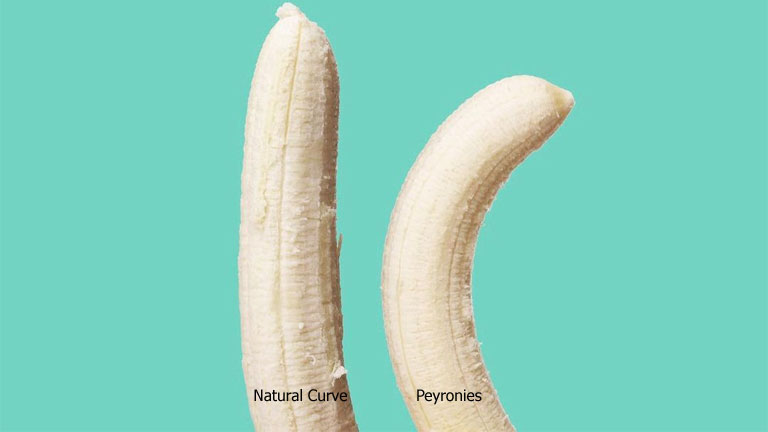
Peyronie’s Disease can be a life-changing condition that affects men. For many men, it renders intercourse impossible or highly uncomfortable, causing stress and anxiety for both the man affected by the condition and his partner. Peyronie’s Disease is a condition that affects the shape and function of a man’s penis. It affects their ability to have strong erections, reduces the size and circumference of the penis, and decreases sensitivity. It can also be extremely painful, especially in the early stages of development.
It is most prevalent in men aged fifty-plus but can affect any man at any age, including teenagers. Unlike other men’s health conditions like erectile dysfunction, which has received massive publicity since the advent of Viagra or Prostate Cancer, Peyronie’s Disease is a relatively unpublicized condition. But that doesn’t mean that it’s a rare condition. The staggering statistics show that it affects up to 10% of the worldwide male population. It is more prevalent than conditions like type 1 diabetes. But because of the nature of the condition, very few men talk freely about it, many men don’t seek treatment and instead suffer in silence.
The symptoms of Peyronie’s Disease can appear overnight or over a few months. Some men first notice a lump on their penis or an indentation. This becomes apparent during erections. They then feel pain, which is sometimes quite acute, followed by a bend. The bend can be quite minor, but in extreme situations, it can curve a full 180 degrees. The majority of men get an upward bend, like a banana, but Peyronie’s Disease is indiscriminate, and the penis can bend in all directions and occasionally have two bends going in opposite directions. Whilst curvature is the most common manifestation of Peyronie’s Disease, some men experience a narrowing of the penis and a ring appears around it. This is known as the hourglass shape. Other men experience a dent or indentation in the penis.
This can lead to severe weakness when having intercourse. There is, however, an exception to the rule as many young men experience a curve to the penis from when they first have erections. The first time they become aware that this is not normal is when they engage in sexual relationships and this can be very traumatic for them. This is known as congenital Peyronie’s and it has no connection with Peyronie’s Disease, other than it shares the same name. It is due to one side of the penis being shorter than the other and when the penis becomes erect with blood the curve appears. Congenital Peyronie’s normally presents itself with a downward curve or a curve to the left. Congenital Peyronies can be corrected through surgery, where one side of the penis is shortened to match the other side. It falls under the category of cosmetic procedures, examples being a person straightening a bent nose, a female having a breast implant or lift where one breast is bigger than the other, or someone with ears that point out having them brought back closer to their head.
fifteen or twenty years ago, there was very little information out there in books or on the web for someone suffering from Peyronie’s Disease. This has changed in the last few years and now there are specialist forums like peyroniesforum.co.uk and specialist websites dedicated to Peyronie’s Disease like www.peyroniesdisease.co.uk that cover the subject in a simple, non-medical manner and in great depth. But given how many men suffer from Peyronie’s Disease there are no charities supporting it and very little help at a local doctor level.
Peyronie’s Disease can develop for a number of different reasons. An accident to the penis is extremely common and can occur during sexual intercourse, whilst playing a sport, or something as simple as getting hit by a swing in the private parts of a children’s playground. This triggers off a reaction in the body which ends up with a fibrous plaque forming. In non-medical terms, this is like having a scar inside the penis. This plaque or scarring inhibits the blood flow and prevents the penis from expanding on the afflicted side. The other side of the penis expands as normal causing the penis to curve around and create the bend. Other causes of Peyronie’s injury could be surgical intervention. A number of men report Peyronie’s Disease following prostate surgery, where they have had both catheters and cameras fed through their penis. Aside from injury, Peyronie’s Disease can be genetic and passed down from father to son. Also, there are related medical conditions, which make a man more prone to develop Peyronie’s Disease: Dupuytren’s contracture where a person notices the bending of fingers into the palm of the hand, and nodules and strings on the palm is one such condition. A rarer condition is Lederhosen disease which presents itself with the development of hard and round or flattened (lumps) on the base of the feet.
So, what is the normal medical route for men faced with Peyronie’s Disease? There are a whole series of treatment options, but none as yet offer 100% success. At the early stages of Peyronie’s Disease, men have often prescribed a penile pump, which draws blood up the penis by creating a vacuum. By drawing blood up the penis, the hope is that the fibrous plaque will not get worse, the blood acts as a healing mechanism and it can have a positive effect on curvature. Pills such as Viagra, known as PDE5 inhibitors are also prescribed along with topical Vitamin E to apply to the penis. Another treatment that is no longer licensed in Europe is collagenase injections. Collagenase is injected into the fibrous plaque in the penis, the intention is to disrupt and break up the plaque. This treatment is available in America and certain other countries around the world.
The gold standard non-invasive treatment is extracorporeal-focused shockwave therapy. Focused shockwave therapy is a technology that has been used for thirty years in the medical world for the breaking up of kidney stones, without the need for surgery. For Peyronie’s disease, the shockwave emits sound waves at the speed of 1500 meters a second and attacks the fibrous plaque, both softening it and breaking it up, enabling the penis to undergo a remodelling process. However, all shockwave is not equal and a man suffering from Peyronie’s Disease needs to carefully research the clinic they go to. Technology costs anything from a few thousand pounds sterling to six-figure sums, so someone undertaking this treatment must check that it is modern-day focused shockwave therapy and not radial shockwave, which is a different type of technology and not suitable under any circumstances for Peyronie’s Disease. There are now clinics specialising in Peyronie’s Disease in major cities around the world. A leading light is the Mansmatters, the premier UK men’s health clinic based in Knightsbridge, Central London. Mansmatters is based in the upmarket Knightsbridge region of London, a 3-minute walk from the iconic Harrods department store and less than one kilometre away from Buckingham Palace. Mansmatters has the most advanced protocols of any non-invasive clinic in the world and uses an array of cutting-edge technology to treat its patients.
There is also the option of invasive surgery, but just like many other medical conditions, surgery is now deemed the absolute final option if nothing else works. Surgery has many risks and downsides like significant penis shortening, loss of sensitivity, and erectile dysfunction. The message though, if you think you have Peyronie’s Disease is to do something about it. There are treatments out there and don’t suffer in silence.




